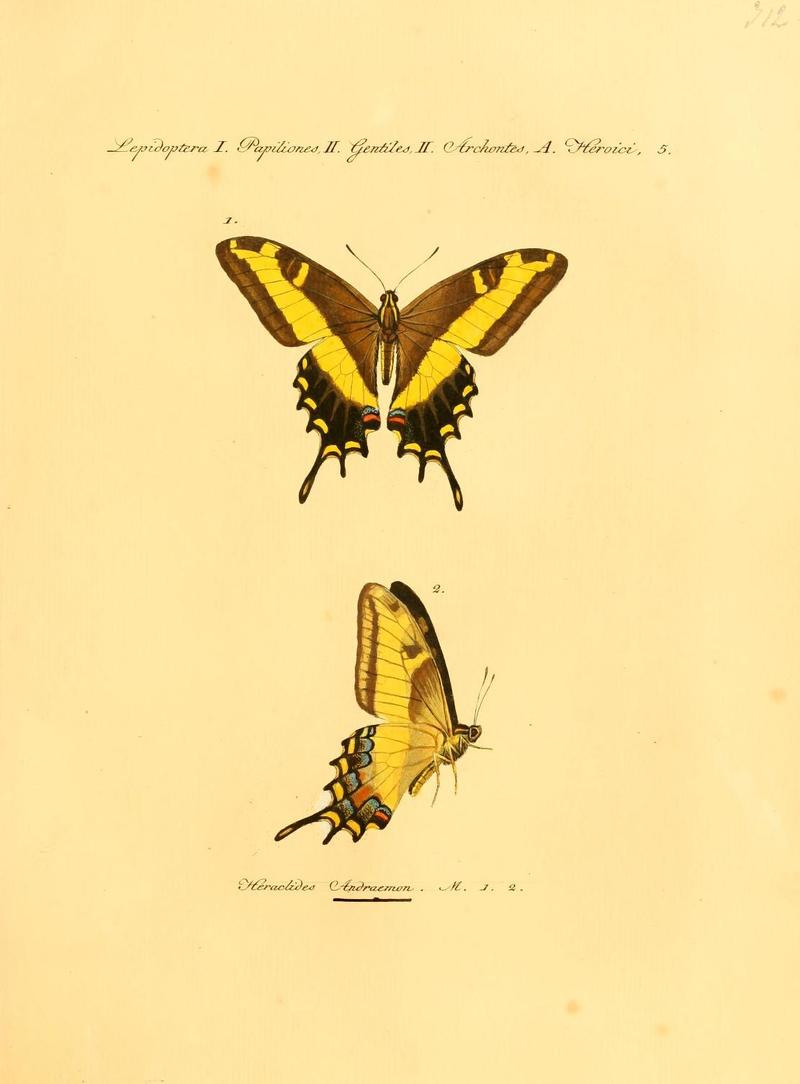|
| Query: Blue butterfly | Result: 120th of 262 | |
Heraclides andraemon = Papilio andraemon (Bahaman swallowtail)
| Subject: | Heraclides andraemon = Papilio andraemon (Bahaman swallowtail)
| | Poster: | Wiki Photos (---@---.---)
| |

| Resolution: 1111x1506
File Size: 77872 Bytes
Upload Date: 2024:01:09 14:51:07
|
Sammlung exotischer Schmetterlinge Vol. 2 ([1819] - [1827]
Plate 99
Heraclides andraemon Hübner, [1823] synonym for Papilio andraemon(Hübner, [1823])
Female
Date 1821
Source https://archive.org/stream/sammlungexotisch223hb#page/n214/mode/1up
Author Jacob Hubner (Jacob Hübner, 1761 - 1826)
Source: https://commons.wikimedia.org/wiki/File:Hubner1821SammlExotSchmett2Plate98.jpg
The Bahaman swallowtail butterfly (Papilio andraemon) is a species of swallowtail butterflies found in the Bahamas, Cuba, Jamaica, and the Cayman Islands. The wingspan of Papilio andraemon is about 10 cm long. The butterfly has a black color on the obverse side of its wings, with a pale yellow band and a thin band of the same color in the wing cell. The hindwings are extended by long thin tails slightly widened at the tip and bear a pale yellow band which extends that of the forewing, submarginal yellow and orange lunules, a brick red ocellus surmounted by an iridescent blue lunule in the anal angle and diffuse iridescent blue lunules in the submarginal part. On the reverse, the wings bear the same patterns in lighter colors, the submarginal blue lunules are more numerous and more marked, the hind wings also bear a reddish macula in the submarginal part.
Order: Lepidoptera
Family: Papilionidae
Genus: Papilio
Species: Papilio andraemon (Hübner, [1823])
Synonyms
- Heraclides andraemon Hübner, [1823] |
^o^
Animal Pictures Archive for smart phones
^o^
|
|